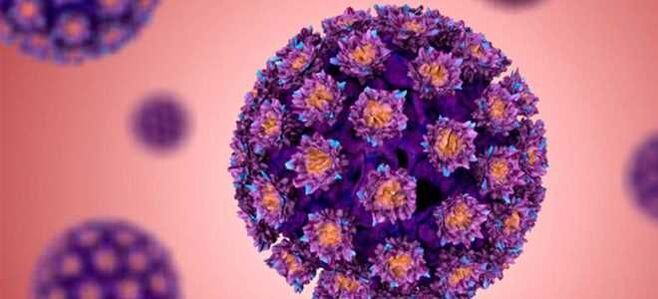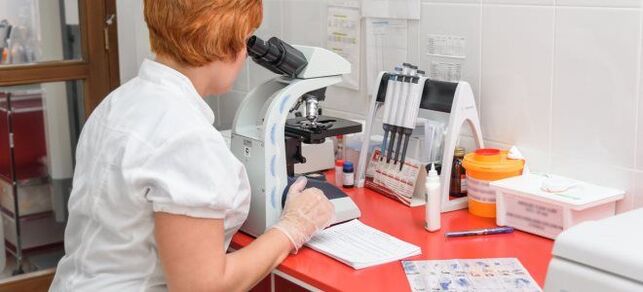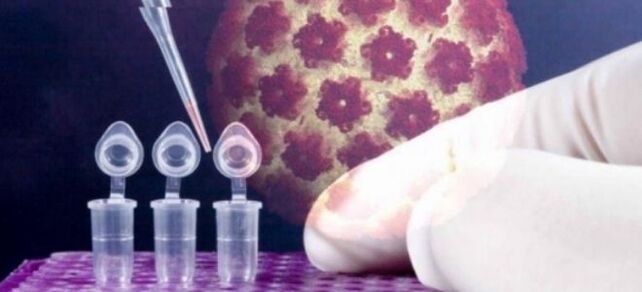
If there are symptoms and signs of the disease, doctors prescribe a number of laboratory tests to confirm the assumptions and make a diagnosis. In the list of appointments, patients can find HPV analysis: what it is, why and when it is prescribed - not everyone can answer.
What is HPV?
The human papillomavirus, HPV, is a group of virus-like infectious diseases that are widespread. Scientists know more than 100 species of this virus and not all of them are dangerous to humans. Most are imperceptibly present in the body for a long time, causing wear and tear. However, about 14 species of this virus are oncogenic - they provoke the development of malignant neoplasms. When diagnosing, doctors always pay attention to the type of HPV, its oncogenicity, which determines further action and the nature of treatment.
Human papillomavirus - species
The papilloma virus is usually divided into species depending on the risk of provoking the development of oncology. Considering this factor, there are three main groups of HPV:
- Non-oncogenic- never cause the development of malignant tumors.
- Low oncogenic risk- may, under certain conditions, provoke the development of cancer: 6, 11, 42, 43, 44.
- High oncogenic risk- Infection with these types of HPV makes it difficult to avoid the development of malignant tumors. Oncogenic human papillomaviruses: 16, 18, 31, 35, 33, 45, 58, 59, 52.

How is human papillomavirus transmitted?
Knowing how the papillomavirus is transmitted can reduce the risk of infection. In practice, however, this is difficult to avoid. In most cases, transmission occurs with the onset of sexual activity: sexual intercourse is the main mode of transmission of the virus. Its transfer can also be done during a kiss, when there are microcracks and scratches on the surface of the lips. You can also become infected if you break the rules of hygiene while visiting public places:
- saunas;
- pool:
- baths;
- and also when using someone else's toothbrush, towel, razor.
Infection can also occur when the baby passes through the mother's infected pathways during birth. Experts do not rule out the possibility of transmission of the virus by contact: it is unstable, but is able to maintain some activity.Among the factors that provoke HPV infection:
- early onset of sexual activity;
- a large number of sexual partners;
- sexually transmitted infections;
- reduced immunity.
Human papillomavirus - symptoms
The human papillomavirus can be present invisibly in the body for a long time. The incubation period, according to experts, can last from 2 months to 2 years. The disease goes unnoticed: there are no clinical symptoms, and the main diagnostic methods show the norm. Every third patient, thanks to their immune system, recovers within 6-12 months of infection.
The clinic of HPV damage to the body comes down to the appearance of skin lesions. Patients notice papillomas, warts and warts on their skin. Their location may be different and correspond to the place of penetration of the virus into the body: the genitals, the surface of the hands, the lips. These formations resemble papillary growths, sometimes outwardly resembling cauliflower. The growths are painless, but rubbing and injuring can cause pain and bleeding.

Why do I need an HPV test?
After talking about the virus, let's move on to information about HPV analysis: what type of test it is, how it is performed and in which cases it is prescribed. To begin with, if human papillomavirus is suspected, the analysis helps to confirm or refute assumptions. Research of this kind has the following objectives:
- identification of HPV with high oncogenic risk;
- confirmation / denial of persistence of a certain type of HPV;
- assessment of the risk of cancer in patients with dysplasia of the epithelial layer of the cervix.
In addition to the reasons given for the study, HPV analysis (what it is - mentioned above) can be shown in the following cases:
- Primary screening for cervical cancer in women over 30 years.
- Evaluation of the results of the performed surgical treatment of intraepithelial neoplasia.
- Doubtful results from cytological examination of gynecological smears.
What tests should I do for HPV?
There are several methods for determining the presence of papilloma virus in the body. However, in most cases, doctors resort to PCR. If it is necessary to undergo an HPV test, patients undergo this test directly. Various biological body fluids can be used as research material:
- blood;
- urine;
- amniotic fluid (when diagnosing a disease during pregnancy).
Speaking of HPV analysis, what it is and how it is performed, it is necessary to note the possibility of examining the tissue material. So, during a colposcopy, the doctor carefully examines the lining of the cervix. The presence of small papillomas on them is direct evidence of damage to the body with HPV. To confirm, take a small piece of tissue for examination under a microscope to rule out malignancy.
HPV diagnostic methods
HPV diagnosis is a set of measures aimed at establishing the presence of the virus and determining its type. The following techniques are used for this purpose:
- Digene test- modern precision method. With its help it is possible to determine the concentration of the virus in the body, type and oncogenicity. Material for examination is scraping of the mucous membrane of the urethra or vagina. It is often used in combination with cytology.
- PCR diagnosis of HPV- a simple and accessible diagnostic method that is widespread. The material used is the patient's blood or urine. It involves the detection of traces of viral DNA in the sample.
- Cytological examination- examination of the smear under a microscope. The evaluation criterion is the presence of modified cells in the smear - dyskeratocytes and koilocytes.
- Detection of antibodies against HPV- helps to identify viral infection in the early stages. The disadvantage is that it is not possible to determine the concentration and type of virus.
- Histological examination - examination of a sample of the affected tissue to determine the type of HPV and its oncogenicity.

Human papillomavirus - how to test?
Before the examination, as soon as the referral is issued, the doctors tell the patient in detail how the HPV test is done in the specific case. Depending on the research methods and materials used, the analysis algorithm may differ. Preparing for a study is very important. Proper implementation of all points of the preparatory measures allows you to obtain objective results of the analysis and eliminate the need for re-implementation.
Preparation for HPV analysis
Prior to HPV analysis, the patient must meet a number of conditions. In this case, the method of research and the type of material to be analyzed are crucial. Presented by:
- blood;
- urine;
- tampon from the vagina or urethra.
Depending on the type of biological fluid tested, the patient is given recommendations on how to prepare for the analysis the day before. The task of the tests is to fully comply with the rules of preparation. This will avoid getting false results, and in some cases false positive results, when the result shows the presence of HPV in its absence.
HPV blood test
Speaking of how to take the HPV test, it should be noted that in most cases it uses the patient's blood. The examination is performed on an empty stomach: 10-12 hours before the expected time for taking the material, the patient can not eat; as a drink you can use plain water without gas. 2-3 days before the day of the analysis it is forbidden to consume alcoholic beverages, fatty and unhealthy foods. Only in this case, diagnosing HPV by blood will allow you to get accurate test results.
HPV smear analysis
This method is more often used to study the fairer sex. Before women are tested for HPV, they are prepared for this examination. The doctor acquaints the patient in detail with all the rules of preparation. The following important points can be highlighted in this process:
- Smear is taken before the start of the course of antibiotics or 2, 5 weeks after the end of treatment.
- On the day of sampling it is forbidden to toilet the external genitalia with chemical hygiene products.
- Choking, introduction of vaginal suppositories is prohibited.
- One day before taking the material, you must abstain from sexual intercourse.
- It is ideal to do an analysis in the middle of the cycle, it is forbidden to conduct research during the ovulation period.

Decoding HPV analysis
Only a doctor can correctly decipher the results of an HPV test. The specialist assesses not only the quantitative value of the indicators, but also the clinical picture, the possible signs of infection. Getting a complete picture of what is happening helps to choose the right drugs and choose effective treatments. At the same time, it is important to take into account the seriousness of timely diagnosis and treatment: with the age of the patient the risk of developing malignant neoplasms increases.
Quantitative HPV analysis
When an HPV test is performed using quantitative analysis, decoding involves determining the concentration of the virus during the test. This helps determine the right patient management tactics. Real-time PCR (RT-PCR) measures the amount of HPV DNA in a test sample. This is necessary for continuous dynamic monitoring of a specific type of human papillomavirus.
However, even those who know about HPV analysis, what it is and how it is done, cannot decipher the results on their own. This should be done in conjunction with the patient's examination and other tests. In the evaluation, the experts adhere to the following interpretation of the indicators:
- lg< 3- the risk of developing dysplasia is low;
- LG 3-5- clinically significant result, there is a risk of developing cervical dysplasia;
- LG >5- high probability of dysplasia, probably the initial stage of the disease.
Qualitative HPV analysis
HPV analysis with high oncogenic risk is performed using this technique. Helps identify HPV types 16 and 18. These forms of the virus often cause genital cancer in women and squamous cell carcinoma, genital warts and cervical dysplasia. The efficiency of detecting HPV DNA reaches 98%. The conclusion offers an answer indicating each type of virus. There are two possible results: found / not found.














































































